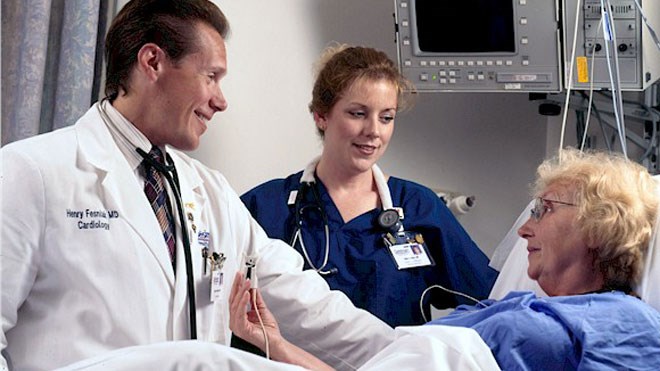The average 75-year-old Canadian lives with five chronic diseases.
Heart failure is one of the big five and is a leading cause of illness and death. Its incidence continues to go up. The heart is a pump. When it is damaged, it pumps less well. Damaged enough, blood will back up into the lungs causing shortness of breath.
You may need pillows to prop you up to breath at night. The kidneys put out less urine and the legs swell. Body weight increases as fluid gathers in the tissues.
Heart failure often reoccurs, so hospital admission rates are high. The patient presents at the emergency department.
“Doc, I cannot breath, I am so short of breath.”
Now, we can do so much better. Sudbury’s Heart Failure Disease Management Program opened in September 2011 at the Ramsey site. The aim is to provide guidance and treatment in an outpatient setting.
Patients who could benefit are identified at time of discharge from hospital, in the emergency department or by referral from their family doctor.
They are seen every few weeks or more often, if necessary, but are told to call in if their weight goes up by two pounds over two to three days or if there is increased swelling or shortness of breath.
If a patient does call, there is same or next-day service, five days a week. There is no shelf-life to being on the program. Once you're in, you're in forever.
In addition, the Northeast Community Care Access Centre now offers telehomecare, which basically means patients can track data such as body weight, blood pressure, heart rate and oxygen level at home and forwarded the information by phone or the Internet to the CCAC.
A multi-disciplinary team — which includes a cardiologist, nurse and spiritual care worker — engages the patient.
When a patient goes to the Centre for Life for rehabilitation, he also has access to a dietician, exercise specialist, psychologist, physiotherapist and social worker. The team reviews and adjusts medications, orders laboratory tests, provides education and rapid response when there is clinical deterioration.
They promote a philosophy that teaches the importance of self-care. At each clinic visit, patients are asked, “Are you taking your pills as prescribed? Are you measuring your weight?”
The patient must be an active participant. This means checking for changes and reporting any changes to the right person at the right time — a partnership between patient and health-care system. The medications that treat HF have side effects. Regular followup is important.
Nutritional assessment and guidance are essential components of management. Special attention must be given to minimizing salt and fluid intake. Implantable electronic devices are being used increasingly as a treatment in HF. The clinic identifies patients who may benefit from such care.
A drug that makes you urinate and eliminate excess fluids is given intravenously when you cannot breath. A few hours in the clinic and you get to go home, a much better outcome than days in the hospital.
The program also provides the opportunity to discuss advance directives with patients who have severe illness. Shared decision-making is the best way to assure patients and families receive care that is consistent with their goals and values.
This permits the patient to choose the types of medical and non-medical care to receive, before illness makes it impossible to participate.
If you think the Heart Failure Disease Management Program could help you, ask your family doctor or cardiologist for a referral.
Dr. Peter Zalan is president of the medical staff at Health Sciences North. His monthly column tackles issues in health care from a local perspective.
